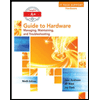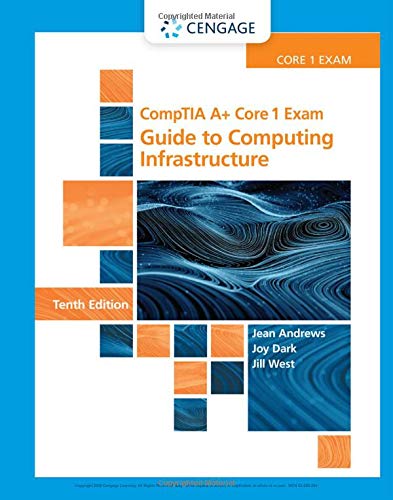
Computer Science: An Overview (13th Edition) (What's New in Computer Science)
13th Edition
ISBN: 9780134875460
Author: Glenn Brookshear, Dennis Brylow
Publisher: PEARSON
expand_more
expand_more
format_list_bulleted
Question
Chapter 2, Problem 33CRP
a.
Program Plan Intro
Program plan:
- LOAD the bit pattern in memory location “0x44” to a register.
- STORE the value in the register to a memory location “0xAA”.
- HALT the
program.
b.
Program Plan Intro
Program plan:
- LOAD the content of memory location “0x34” into a register.
- LOAD the memory location “0xF0” to another register.
- AND the bit pattern of registers, store the result in another register.
- STORE back the value of AND operation to memory location “0x34”.
- HALT the program.
c.
Program Plan Intro
Program plan:
- LOAD the content of memory location “0xA5” into a register “2”.
- LOAD the memory location “0x0F” to another register “3”.
- AND the bit patterns of registers, store the result in register “4”.
- LOAD the content of memory location “0xA6” into a register “5”.
- LOAD the memory location “0xF0” to register “6”.
- AND the bit patterns of register “5” and “6”, store the result in register “7”.
- OR the bit patterns of register “7” and “4”, store the result in register “8”.
- STORE back the value OR operation to memory location “0xA6”.
- HALT the program.
d.
Program Plan Intro
Program plan:
- LOAD the content of memory location “0xA5” into a register “2”.
- LOAD the memory location “0x0F” to another register “3”.
- AND the bit patterns of registers, store the result in register “4”.
- LOAD the memory location “0xF0” to register “5”.
- AND the bit patterns of register “2” and “5”, store the result in register “6”.
- ROTATE the bit pattern in register “6” through four times.
- OR the bit patterns of register “6” and “4”, store the result in register “7”.
- STORE back the value OR operation to memory location “0xA5”.
- HALT the program.
Expert Solution & Answer
Want to see the full answer?
Check out a sample textbook solution
Students have asked these similar questions
Specifications: Part-1Part-1: DescriptionIn this part of the lab you will build a single operation ALU. This ALU will implement a bitwise left rotation. Forthis lab assignment you are not allowed to use Digital's Arithmetic components.IF YOU ARE FOUND USING THEM, YOU WILL RECEIVE A ZERO FOR LAB2!The ALU you will be implementing consists of two 4-bit inputs (named inA and inB) and one 4-bit output (named
out). Your ALU must rotate the bits in inA by the amount given by inB (i.e. 0-15).Part-1: User InterfaceYou are provided an interface file lab2_part1.dig; start Part-1 from this file.NOTE: You are not permitted to edit the content inside the dotted lines rectangle.Part-1: ExampleIn the figure above, the input values that we have selected to test are inA = {inA_3, inA_2, inA_1, inA_0} = {0, 1, 0,0} and inB = {inB_3, inB_2, inB_1, inB_0} = {0, 0, 1, 0}. Therefore, we must rotate the bus 0100 bitwise left by00102, or 2 in base 10, to get {0, 0, 0, 1}. Please note that a rotation left is…
How can I perform Laplace Transformation when using integration based on this? Where we convert time-based domain to frequency domain
what would be the best way I can explain the bevhoirs of Laplace and Inverse Transofrmation In MATLAB.
Chapter 2 Solutions
Computer Science: An Overview (13th Edition) (What's New in Computer Science)
Ch. 2.1 - What sequence of events do you think would be...Ch. 2.1 - What information must the CPU supply to the main...Ch. 2.1 - Prob. 3QECh. 2.2 - Prob. 1QECh. 2.2 - In the text, JUMP instructions were expressed by...Ch. 2.2 - Is the instruction If 0 equals 0, then jump to...Ch. 2.2 - Write the example program in Figure 2.7 in actual...Ch. 2.2 - The following are instructions written in Vole...Ch. 2.2 - What is the difference between the instructions...Ch. 2.2 - Here are some instructions in English. Translate...
Ch. 2.3 - Prob. 1QECh. 2.3 - Suppose the Vole memory cells at addresses 0xB0 to...Ch. 2.3 - Suppose the Vole memory cells at addresses 0xA4 to...Ch. 2.3 - Suppose the Vole memory cells at addresses 0xF0 to...Ch. 2.4 - Prob. 1QECh. 2.4 - Prob. 2QECh. 2.4 - Prob. 3QECh. 2.4 - a. Suppose you XOR the first 2 bits of a string of...Ch. 2.4 - Prob. 5QECh. 2.4 - Prob. 6QECh. 2.4 - Prob. 7QECh. 2.4 - Prob. 8QECh. 2.4 - Prob. 9QECh. 2.4 - Prob. 10QECh. 2.4 - Using Vole machine language (Appendix C), write a...Ch. 2.4 - Prob. 12QECh. 2.5 - Prob. 1QECh. 2.5 - Prob. 2QECh. 2.5 - Prob. 3QECh. 2.6 - The hypotenuse example script truncates the sides...Ch. 2.6 - Prob. 2QECh. 2.6 - The Python built-in function str () will convert a...Ch. 2.6 - Use the Python built-in bin () to write a script...Ch. 2.6 - Prob. 6QECh. 2.7 - Referring back to Questions 3 of Section 2.3, if...Ch. 2.7 - Prob. 2QECh. 2.7 - Suppose there were two central processing units...Ch. 2 - a. In what way are general-purpose registers and...Ch. 2 - Answer the following questions in Vole machine...Ch. 2 - Prob. 3CRPCh. 2 - What is the value of the program counter in the...Ch. 2 - Prob. 5CRPCh. 2 - Prob. 6CRPCh. 2 - Prob. 7CRPCh. 2 - Suppose a machine language is designed with an...Ch. 2 - Translate the following instructions from English...Ch. 2 - Rewrite the program in Figure 2.7 assuming that...Ch. 2 - Classify each of the following Vole instructions...Ch. 2 - Prob. 12CRPCh. 2 - Prob. 13CRPCh. 2 - Suppose the memory cells at addresses 0x00 through...Ch. 2 - Suppose the memory cells at addresses 0x00 through...Ch. 2 - Suppose the memory cells at addresses 0x00 through...Ch. 2 - Suppose the memory cells at addresses 0x00 through...Ch. 2 - Prob. 18CRPCh. 2 - If the Vole executes an instruction every...Ch. 2 - Prob. 20CRPCh. 2 - Prob. 21CRPCh. 2 - Prob. 22CRPCh. 2 - Prob. 23CRPCh. 2 - Write a program in Vole to compute the sum of...Ch. 2 - Prob. 26CRPCh. 2 - Prob. 27CRPCh. 2 - Suppose the following program, written in Vole, is...Ch. 2 - Summarize the steps involved when the Vole...Ch. 2 - Summarize the steps involved when the Vole...Ch. 2 - Summarize the steps involved when the Vole...Ch. 2 - Suppose the registers 0x4 and 0x5 in the Vole...Ch. 2 - Prob. 33CRPCh. 2 - Prob. 34CRPCh. 2 - Prob. 35CRPCh. 2 - Prob. 36CRPCh. 2 - Prob. 37CRPCh. 2 - Prob. 38CRPCh. 2 - Prob. 39CRPCh. 2 - Prob. 40CRPCh. 2 - Prob. 41CRPCh. 2 - Prob. 42CRPCh. 2 - a. What single instruction in the Vole machine...Ch. 2 - Write a Vole program that reverses the contents of...Ch. 2 - Write a Vole program that subtracts the value...Ch. 2 - Prob. 46CRPCh. 2 - Suppose a person is typing forty words per minute...Ch. 2 - Prob. 48CRPCh. 2 - Suppose the Vole communicates with a printer using...Ch. 2 - Write a Vole program that places 0s in all the...Ch. 2 - Prob. 51CRPCh. 2 - Prob. 52CRPCh. 2 - Suppose you are given 32 processors, each capable...Ch. 2 - Prob. 54CRPCh. 2 - Prob. 55CRPCh. 2 - Describe how the average of a collection of...Ch. 2 - Write and test a Python script that reads in a...Ch. 2 - Write and test a Python script that reads in a...Ch. 2 - Prob. 59CRPCh. 2 - Suppose a computer manufacturer develops a new...Ch. 2 - Prob. 2SICh. 2 - Prob. 3SICh. 2 - Prob. 4SICh. 2 - Suppose a manufacturer produces a computer chip...Ch. 2 - Prob. 6SICh. 2 - Prob. 7SICh. 2 - Prob. 8SI
Knowledge Booster
Similar questions
- What IETF protocol is NetFlow associated with? Group of answer choices IPX/SPX IPIX HTTPS SSHarrow_forwardHow can I perform Laplace Transformation when using integration based on this?arrow_forwardWrite an example of a personal reflection of your course. - What you liked about the course. - What you didn’t like about the course. - Suggestions for improvement. Course: Information and Decision Sciences (IDS) The Reflection Paper should be 1 or 2 pages in length.arrow_forward
- using r languagearrow_forwardI need help in explaining how I can demonstrate how the Laplace & Inverse transformations behaves in MATLAB transformation (ex: LIke in graph or something else)arrow_forwardYou have made the Web solution with Node.js. please let me know what problems and benefits I would experience while making the Web solution here, as compared to any other Web solution you have developed in the past. what problems and benefits/things to keep in mind as someone just learningarrow_forward
- PHP is the server-side scripting language. MySQL is used with PHP to store all the data. EXPLAIN in details how to install and run the PHP/MySQL on your computer. List the issues and challenges I may encounter while making this set-up? why I asked: I currently have issues logging into http://localhost/phpmyadmin/ and I tried using the command prompt in administrator to reset the password but I got the error LOCALHOST PORT not found.arrow_forwardHTML defines content, CSS defines layout, and JavaScript adds logic to the website on the client side. EXPLAIN IN DETAIL USING an example.arrow_forwardusing r languangearrow_forward
arrow_back_ios
SEE MORE QUESTIONS
arrow_forward_ios
Recommended textbooks for you
 Systems ArchitectureComputer ScienceISBN:9781305080195Author:Stephen D. BurdPublisher:Cengage Learning
Systems ArchitectureComputer ScienceISBN:9781305080195Author:Stephen D. BurdPublisher:Cengage Learning A+ Guide to Hardware (Standalone Book) (MindTap C...Computer ScienceISBN:9781305266452Author:Jean AndrewsPublisher:Cengage Learning
A+ Guide to Hardware (Standalone Book) (MindTap C...Computer ScienceISBN:9781305266452Author:Jean AndrewsPublisher:Cengage Learning A+ Guide To It Technical SupportComputer ScienceISBN:9780357108291Author:ANDREWS, Jean.Publisher:Cengage,
A+ Guide To It Technical SupportComputer ScienceISBN:9780357108291Author:ANDREWS, Jean.Publisher:Cengage, Comptia A+ Core 1 Exam: Guide To Computing Infras...Computer ScienceISBN:9780357108376Author:Jean Andrews, Joy Dark, Jill WestPublisher:Cengage Learning
Comptia A+ Core 1 Exam: Guide To Computing Infras...Computer ScienceISBN:9780357108376Author:Jean Andrews, Joy Dark, Jill WestPublisher:Cengage Learning C++ for Engineers and ScientistsComputer ScienceISBN:9781133187844Author:Bronson, Gary J.Publisher:Course Technology Ptr
C++ for Engineers and ScientistsComputer ScienceISBN:9781133187844Author:Bronson, Gary J.Publisher:Course Technology Ptr

Systems Architecture
Computer Science
ISBN:9781305080195
Author:Stephen D. Burd
Publisher:Cengage Learning

A+ Guide to Hardware (Standalone Book) (MindTap C...
Computer Science
ISBN:9781305266452
Author:Jean Andrews
Publisher:Cengage Learning

A+ Guide To It Technical Support
Computer Science
ISBN:9780357108291
Author:ANDREWS, Jean.
Publisher:Cengage,

Comptia A+ Core 1 Exam: Guide To Computing Infras...
Computer Science
ISBN:9780357108376
Author:Jean Andrews, Joy Dark, Jill West
Publisher:Cengage Learning

C++ for Engineers and Scientists
Computer Science
ISBN:9781133187844
Author:Bronson, Gary J.
Publisher:Course Technology Ptr
